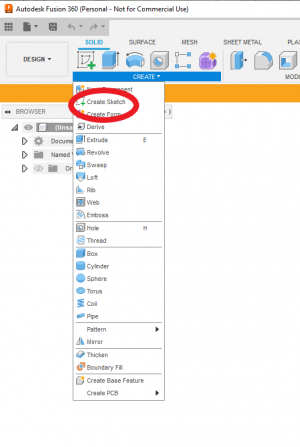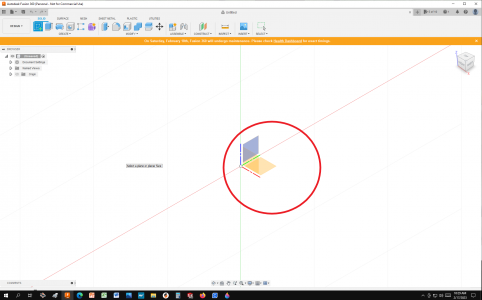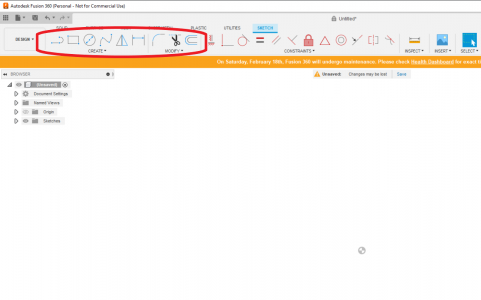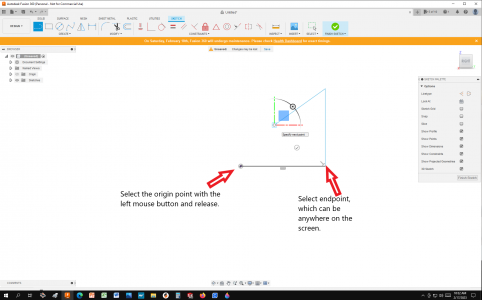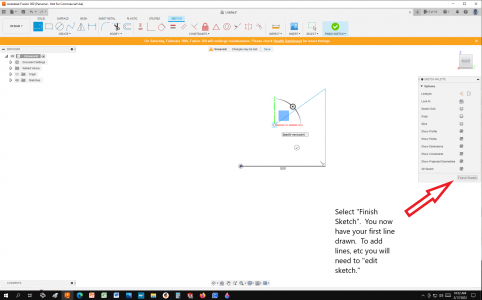@3strucking
First read the 3rd paragraph of below...."So, if you want to use FreeCAD..."
I agree it takes a lot of time to learn big software packages and if you walk a way for a few months you have to learn a lot of stuff over. I have used FreeCAD, but not for quite a while. In fact, I am not for sure my install even still works. I used it to make a few things and to design some gears. I am not an expert on FreeCAD or Fusion 360, but FreeCAD seems to do everything that 360 does, but is not as polished. I seldom need to make very complicated 3-D items, so I usually just write my own G-code by hand. It is not that hard and after you do it a few times then you get faster plus you have a personal library of bits of code to work from. However, FreeCAD does have a hand full of G-code generators. Anyway, the best I can tell the general concept of 3D design is the same in all of the packages. You just have to learn new command syntax and there placement in the menus when you go from one to another. I have an old 2-D VISIO package and I am old school (high school mechanical drafting--pencil/paper and T-square and parallel bar) so I usually do my drawings in 2-D. So VISIO is fine. It runs faster and is simpler to learn and comes with many pre-drawn objects. However, my old Visio package does not generate G-code, but others have worked on this.. VISIO is a MS OFFICE add on and so it not free.
I also played with Fusion360, but quit when they started changing the rules plus they now require that one runs Win10 or higher and I still use Win7. There is no doubt that 360 is slicker package, but this is to be expected for software that you have to pay for. (I have a lot of other scientific software that cost a lot of money, but which would not run on OS platforms above Win7, unless you repurchase it... so I have stayed with Win7. Besides I had bad experiences with some of the early OSs that came after Win7.) I have a number of reasonably decent computers and on one of my favorites I installed Win10 just for situations like this, but I still prefer Win7. This computer is used to run some automated experiments, in Win7, that I designed, but have not used for a while. So I just pulled the HDD, installed Win10, and when I need to I just swap HDDs to jump from Win7 to Win10 etc.
So, if you want to use FreeCAD or other packages built on Python I suggest that you first install a shell called "Anaconda Navigator". It will automatically install all of the Python packages for you and a number of other applications... and set things up for the FreeCAD install which requires Python for some parts. It also contains another package called Conda which is a package for installing various parts, but you do not need to worry about it for now. There are a lot of other packages besides FreeCAD that will run from this shell and some of them are automatically installed. Anaconda automatically loads itself and Python and lots of small packages so it takes some time to boot up. Once it is installed and running it seems pretty fast. If I recall correctly, once installed, FreeCAD and Python will run independently from Anaconda, but Anaconda is good to have installed as it puts all of the needed parts in the folders where they can be found by the various applications. By the way, if you have already installed FreeCAD or Python I suggest that you uninstall them first then install Anaconda followed by the FreeCAD install. By the way Python is an interpretative language rather than being compiled. This allows you to see what is going on in many of the subroutine packages. My understanding is that some the core parts are complied C-programs and so over all it is still pretty fast.
A similar comparison between FreeCAD and Fusion 360 is the comparison of MatLab (scientific math package) and Python math/science package (also can run under Anaconda). You can do anything in Python that you can do in MatLab, but MatLab is definitely more polished and in this case is easier to recall after memories of written code have faded.
By the way, every machine controller seems to use its own version of G-code! However, the basic commands seem to be pretty common. Anyway, for any CAD generated g-code you will want to check it out manually before running it on you machine. Start simple. Oh, well another reason to know how to write G-code from scratch. The CAD packages also ususally have a simulator to illustrate what the G-code is doing.
Good Luck.
Dave L.
Does anyone here use FreeCAD? I think thats the one I am going to dedicate the time to. I also have a student version of Solidworks.
First read the 3rd paragraph of below...."So, if you want to use FreeCAD..."
I agree it takes a lot of time to learn big software packages and if you walk a way for a few months you have to learn a lot of stuff over. I have used FreeCAD, but not for quite a while. In fact, I am not for sure my install even still works. I used it to make a few things and to design some gears. I am not an expert on FreeCAD or Fusion 360, but FreeCAD seems to do everything that 360 does, but is not as polished. I seldom need to make very complicated 3-D items, so I usually just write my own G-code by hand. It is not that hard and after you do it a few times then you get faster plus you have a personal library of bits of code to work from. However, FreeCAD does have a hand full of G-code generators. Anyway, the best I can tell the general concept of 3D design is the same in all of the packages. You just have to learn new command syntax and there placement in the menus when you go from one to another. I have an old 2-D VISIO package and I am old school (high school mechanical drafting--pencil/paper and T-square and parallel bar) so I usually do my drawings in 2-D. So VISIO is fine. It runs faster and is simpler to learn and comes with many pre-drawn objects. However, my old Visio package does not generate G-code, but others have worked on this.. VISIO is a MS OFFICE add on and so it not free.
I also played with Fusion360, but quit when they started changing the rules plus they now require that one runs Win10 or higher and I still use Win7. There is no doubt that 360 is slicker package, but this is to be expected for software that you have to pay for. (I have a lot of other scientific software that cost a lot of money, but which would not run on OS platforms above Win7, unless you repurchase it... so I have stayed with Win7. Besides I had bad experiences with some of the early OSs that came after Win7.) I have a number of reasonably decent computers and on one of my favorites I installed Win10 just for situations like this, but I still prefer Win7. This computer is used to run some automated experiments, in Win7, that I designed, but have not used for a while. So I just pulled the HDD, installed Win10, and when I need to I just swap HDDs to jump from Win7 to Win10 etc.
So, if you want to use FreeCAD or other packages built on Python I suggest that you first install a shell called "Anaconda Navigator". It will automatically install all of the Python packages for you and a number of other applications... and set things up for the FreeCAD install which requires Python for some parts. It also contains another package called Conda which is a package for installing various parts, but you do not need to worry about it for now. There are a lot of other packages besides FreeCAD that will run from this shell and some of them are automatically installed. Anaconda automatically loads itself and Python and lots of small packages so it takes some time to boot up. Once it is installed and running it seems pretty fast. If I recall correctly, once installed, FreeCAD and Python will run independently from Anaconda, but Anaconda is good to have installed as it puts all of the needed parts in the folders where they can be found by the various applications. By the way, if you have already installed FreeCAD or Python I suggest that you uninstall them first then install Anaconda followed by the FreeCAD install. By the way Python is an interpretative language rather than being compiled. This allows you to see what is going on in many of the subroutine packages. My understanding is that some the core parts are complied C-programs and so over all it is still pretty fast.
A similar comparison between FreeCAD and Fusion 360 is the comparison of MatLab (scientific math package) and Python math/science package (also can run under Anaconda). You can do anything in Python that you can do in MatLab, but MatLab is definitely more polished and in this case is easier to recall after memories of written code have faded.
By the way, every machine controller seems to use its own version of G-code! However, the basic commands seem to be pretty common. Anyway, for any CAD generated g-code you will want to check it out manually before running it on you machine. Start simple. Oh, well another reason to know how to write G-code from scratch. The CAD packages also ususally have a simulator to illustrate what the G-code is doing.
Good Luck.
Dave L.


